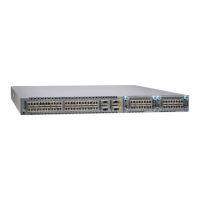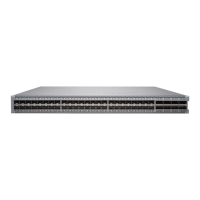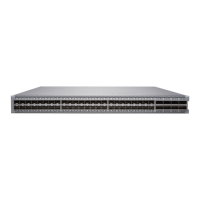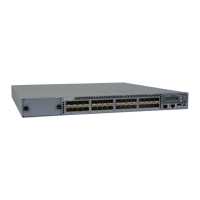Disconnect a Fiber-Opc Cable
Before you disconnect a ber-opc cable from an opcal transceiver, ensure that you have taken the
necessary precauons for safe handling of lasers. See
Laser and LED Safety Guidelines and Warnings
.
Ensure that you have the following parts and tools available:
• A rubber safety cap to cover the transceiver
• A rubber safety cap to cover the ber-opc cable connector
Juniper Networks devices have opcal transceivers to which you can connect ber-opc cables.
To disconnect a ber-opc cable from an opcal transceiver installed in the device:
1. Disable the port in which the transceiver is installed by issuing the following command:
[edit interfaces]
user@device# set
interface-name
disable
LASER WARNING: Do not look directly into a ber-opc transceiver or into the ends
of ber-opc cables. Fiber-opc transceivers and ber-opc cables connected to
transceivers emit laser light that can damage your eyes.
2. Carefully unplug the ber-opc cable connector from the transceiver.
3. Cover the transceiver with a rubber safety cap.
LASER WARNING: Do not leave a ber-opc transceiver uncovered except when
inserng or removing a cable. The rubber safety cap keeps the port clean and protects
your eyes from accidental exposure to laser light.
4. Cover the ber-opc cable connector with the rubber safety cap.
How to Handle Fiber-Opc Cables
Fiber-opc cables connect to opcal transceivers that are installed in Juniper Networks devices.
Follow these guidelines when handling ber-opc cables:
113

